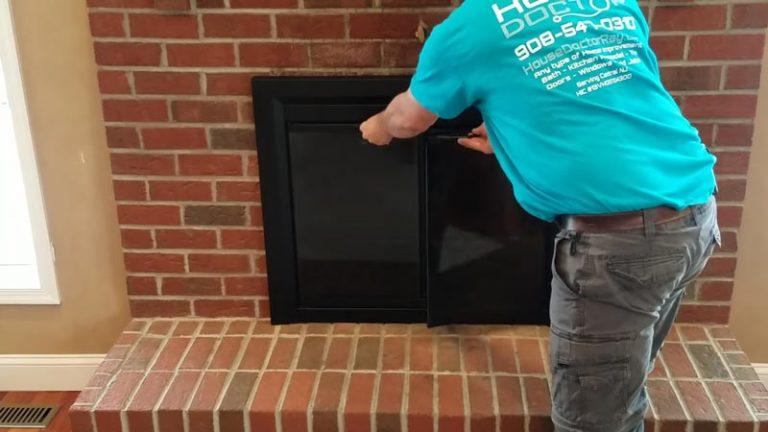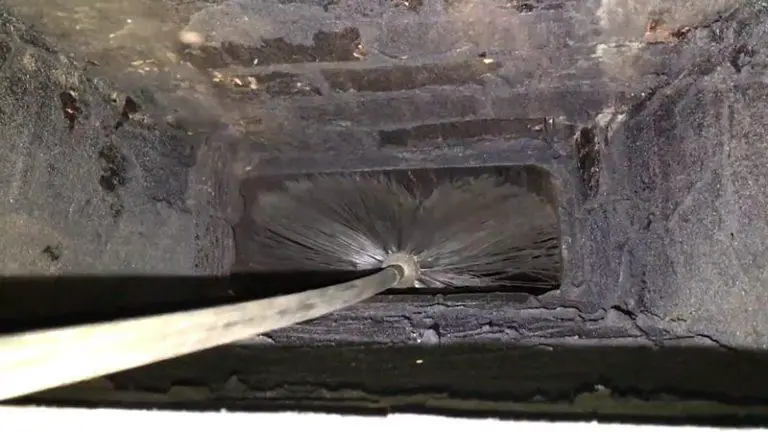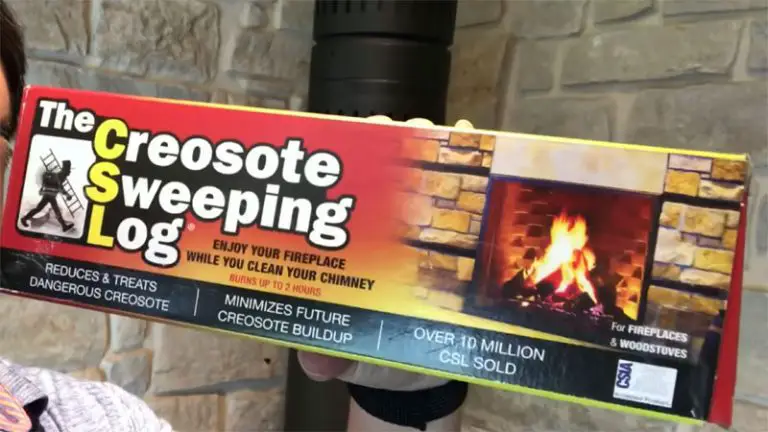What Causes Creosote To Build Up In Chimney
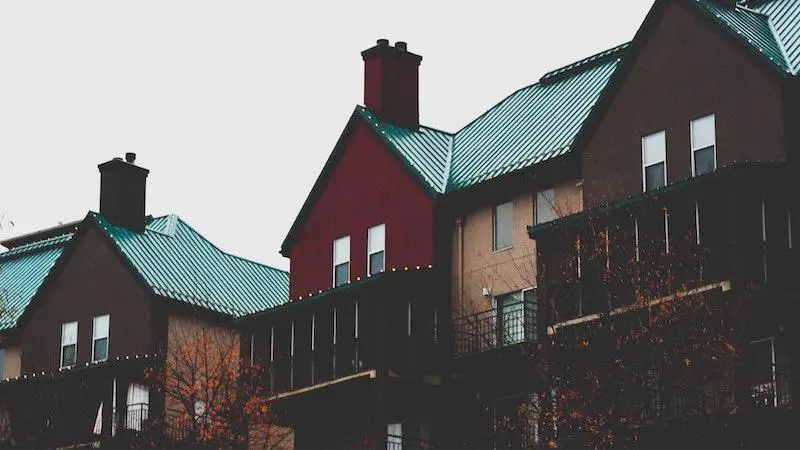
Chimneys should be cleaned on a regular basis to prevent the accumulation of creosote. Unseasoned wood can lead to poor burning, and restricted airflow will increase the risk of chimney fires.
If your home has an existing chimney, make sure it is properly insulated against cooler temperatures at night time (below 50 degrees Fahrenheit). Creosote build-up in the fireplace can restrict airflow and cause problems with indoor air quality–think sickly sweet smells and even health concerns like asthma attacks.
A professional inspection can help identify any potential issues with your chimney before they become too big or expensive to fix yourself.
You'll Learn About
What Causes Creosote To Build Up In Chimney?
If your chimney is not properly cleaned, it can restrict the flow of air and create an uncomfortable environment in your home. Unseasoned wood may be used if a professional contractor isn’t available.
A lack of ventilation and a cool temperature often leads to creosote build-up in a chimney.” Restricting the air supply can cause restricted oxygen levels which will lead to problems with corrosion (especially with older masonry).
Finally, restricting airflow can also cause temperatures to drop below normal levels – this could contribute to ice buildup on the roofline or around windows/doors.
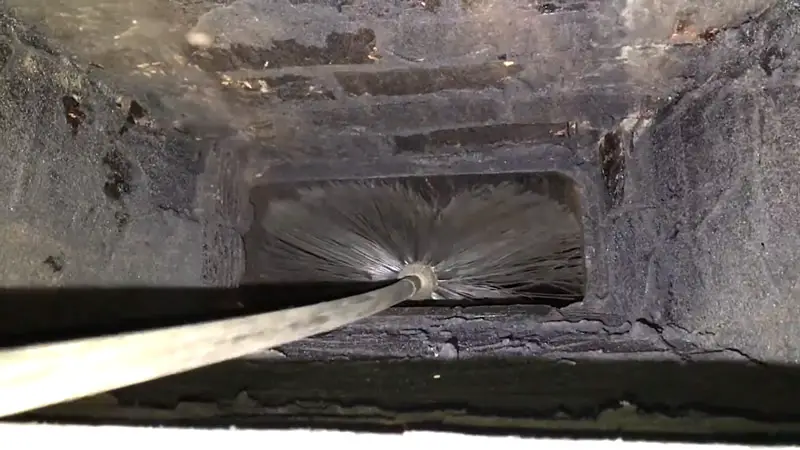
Chimney is Not Properly Cleaned
Creosote builds up in chimneys when the flue is not cleaned on a regular basis. If your chimney isn’t clean, it’s easier for creosote to form and accumulate.
A professional cleaning will remove any existing creosote and prevent future build-up. Cleaning your chimney every year can help keep your home safe and healthy.
Contact us today to schedule an inspection of your Chimney – we’ll take care of the rest.
Unseasoned Wood Is Used
Chimney creosote is a build-up of tar and soot that can form when the wood in your chimney isn’t seasoned properly. Unseasoned wood doesn’t burn as easily, which means the flue gases won’t be eliminated as quickly.
This leaves more residue on the walls of your chimney, where it can combine with other pollutants to create creosote. Creosote will also accumulate over time if you have a masonry or clay fireplace insert since they don’t expel heat well either way.
If you have an older home with unseasoned wood and a poor ventilation system, creosote could eventually cause serious damage to your property
Air Supply Is Restricted In The Chimney
Creosote builds up in chimneys when the air supply is restricted. This can be caused by problems with the flue, such as a blockage or damage. If you have any concerns about your chimney’s health, it is important to contact an expert for help.
There are many ways to prevent creosote from building up in your chimney – some of which may require less work than others. Keep an eye on the condition of your flue and make necessary repairs if needed so that creosote doesn’t build up in the future.
Cooler Than Normal Temperature Exists In The Chimney
Creosote is a material that forms in the chimney when wood smoke from the burning of fossil fuels accumulates over time. When it reaches a certain point, creosote can cause major problems for your chimney including damage to masonry and an inability to draw heat out of your home.
If you notice any unusual odors or black soot coming from your fireplace, take action right away. Check with a professional about how best to clean and maintain your Chimney if it’s showing signs of trouble. You may also want to consider replacing your Chimney if it becomes too damaged.
Creosote Buildup Occurs
Creosote buildup can occur due to a variety of reasons, including faulty chimneys and improper use of fireplaces or stoves. If left unchecked, creosote will build up on the inside surfaces of your chimney and cause damage to your home’s heating and cooling systems.
In order to prevent this from happening, it is important to regularly inspect your chimney for signs of trouble and make any necessary repairs as needed. You can also reduce the chance of creosote buildup by using an effective exhaust system in your fireplace or stove; doing so will help clear away smoke quickly and minimize the amount of creosote that accumulates over time.
Finally, be sure to keep all combustibles—including wood—away from open flames while you are burning them in order to avoid creating sparks that could ignite creosote residue nearby.
Where does most creosote build up?
Creosote is a chemical that can form in oil and gas pipelines, refineries, and other locations where large quantities of fuel are burned. Creosote often builds up on the inside surfaces of these pipes, which can cause them to corrode.
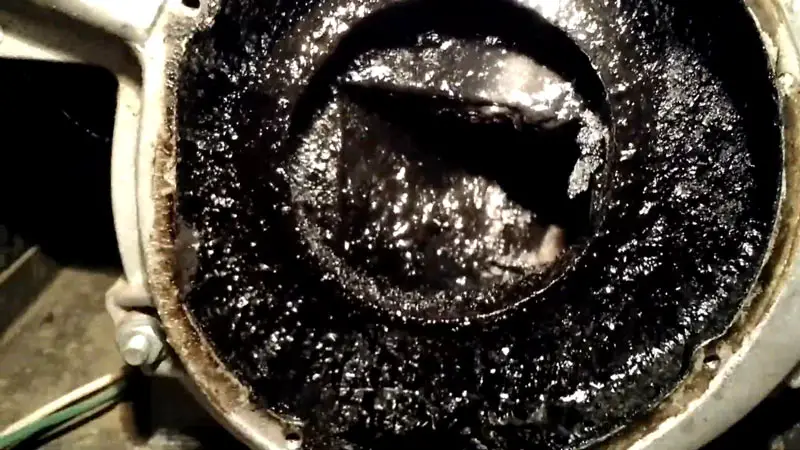
Chimney is Too Short
Creosote builds up when the smoke from a fire doesn’t have enough time to escape and dissipate. One of the most common factors that can limit this flow of air is if your chimney is too short. A shorter chimney will result in more smoke being trapped inside, which then causes creosote to build up.
Flue Lining Is Damaged
If the flue lining is damaged or corrupted, it will not be able to effectively ventilate the fireplace and allow smoke and creosote to escape. This can cause significant problems with your home’s ventilation system, as well as increase the chances of Creosote buildup in the walls and ceilings below the fireplace area.
Chimney Is Not Well-Maintained
A poorly maintained chimney may also contribute to increased levels of Creosote accumulation due to improper airflow within the structure. Poorly sealed joints, missing caps, corroded parts – all of these are potential sources for leaks that could lead to an accumulation of creosote over time
Will a hot fire remove creosote?
Creosote is a type of tar that builds up on the surface of metal surfaces over time. This can cause your car to have Problems with its performance, such as decreased fuel efficiency and rusting.
However, if you catch the creosote in time and remove it using a hot fire, it should be relatively easy to fix. Creosote is a by-product of oil and coal burning. It is created when the fuel oils are burned in an incomplete or uncontrolled manner.
Creosote can accumulate on surfaces inside and outside your home, including the chimney. When creosote builds up, it can cause problems such as poor air quality, leaking water damage, fire hazards, and structural failure. The best way to prevent creosote from building up in your chimney is to clean it regularly using a hot fire method or an acid-cleaning solution.
You also want to make sure that you remove any combustible materials before lighting a hot fire in your fireplace or stovetop grill area.
At what temperature does creosote buildup?
Creosote buildup can occur at any temperature, but it is most common in cold climates where the wood-burning stove is used. If your home has a chimney, heat will flow up the inside of the chimney between 150 and 250 degrees Fahrenheit.
When this happens, dark streaks on the outside of the chimney are often visible. You can reduce creosote damage by cleaning your chimney on a regular basis to prevent build-up from happening in the first place. In cold climates, make sure you keep your heating unit turned off when not in use to avoid building up condensation inside of your furnace
What dissolves creosote?
If you see creosote build-up on a wood surface, the most likely cause is water. Creosote is an oily liquid that forms when the wood dries out and the oil in the wood combines with oxygen from the air.
When water mixes with creosote, it breaks down some of its molecules and dissolves them. This process can leave behind a sticky residue that attracts dirt and other debris over time. The main ingredient that dissolves creosote is water.
Exposure to salt water will also help to dissolve the compound, though it is not as effective as using fresh water. Over time, vinegar will break down the creosote and allow you to clean your wood surfaces without having to use harsh chemicals.
Cleaning with salt water may be more effective than using chemical cleaners in removing creosote buildup from wood surfaces.
How often should you burn a creosote log?
You should burn a creosote log every 60 fires to keep your chimney clean and functioning properly. Check the chimney monthly to determine when you need to burn a creosote log.
The size of the creosote log matters – make it big enough so that it burns completely each time you use it, but not too large that you have trouble getting it into the firebox. Be sure to check with your local Chimney Sweep orFire Inspector about how often to burn a creosote log in order to prevent damage to tousing up your chimney’s safety.
Should I worry about creosote?
Creosote is a type of oil that can build up on the engine over time. This can cause problems like smoke coming from the engine, reduced fuel efficiency, and even a potential fire.
If you see any signs that your engine may be creosote-related, take it to a mechanic for inspection.
Creosote Is A Toxic Gas
Creosote is a toxic gas that can cause serious health risks if it gets into your air supply.
This gas is made up of volatile compounds and it can be released from the engine when you are driving or when the car is in storage. Exposure to this gas may lead to respiratory problems, including pneumonia, as well as heart issues, and even death.
Carbon Monoxide Can Be Deadly
Carbon monoxide (CO) is a dangerous poison that forms when carbon dioxide (CO2) combines with oxygen in the presence of heat or sunlight. CO poisoning occurs when an individual breathes in high levels of this gas and can cause dizziness, nausea, vomiting, confusion, and even death within minutes unless treated immediately by paramedics.
Chimneys Are Important Parts of Your Home
A chimney plays an important role in your home’s heating system by allowing smoke and fumes to escape into the atmosphere where they can be dispersed evenly throughout the house without causing harm to anyone inside it.
If there is any damage to a chimney – such as from fire – then these gases will accumulate inside the structure until it eventually explodes resulting in significant property damage or loss of life.
Obstructed Chimneys Cause Serious Health Risks
If your chimney isn’t working properly due to obstruction caused by leaves, twigs, or other debris then you run the risk of deadly carbon monoxide poisoning.
To Recap
Chimneys can collect creosote, which is a by-product of burning wood. Creosote can plug vents and cause poor airflow, leading to fire hazards. Regular inspection and cleaning of your chimney will help prevent build-up and problems down the road.

